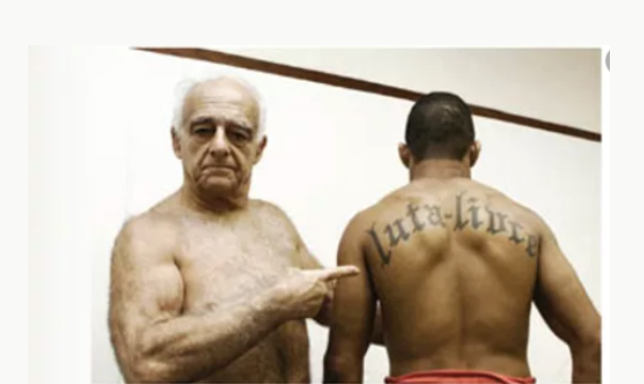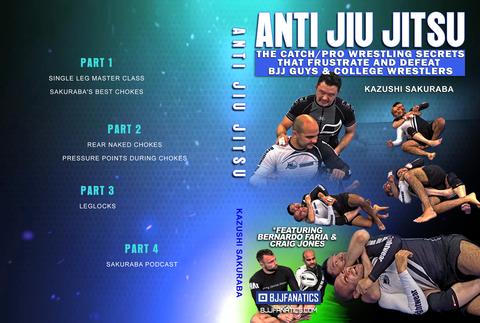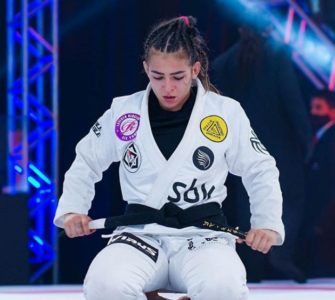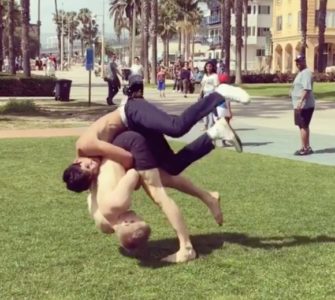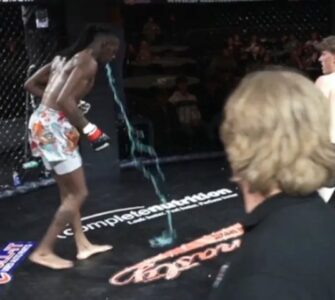Written by Raphael Levy of Jits.fr
With two colleagues, I was doing a few years ago my first pilgrimage to Rio. And like many gringos before me, after a few weeks of frantic workouts, I ended up injuring myself. In Upper, the headquarters of the Nova Uniao academy in Flamengo, a little old man who came to his gym workout noticed my discomfort when he saw me holding my arm. As a father would do for his son, he motivated me and gave me some medical advice to put me back on my feet as soon as possible. I learned later that this old man was none other than Roberto Leitão, one of the highest ranking masters of Luta Livre.
I met him again on June 15 during a workshop organized by Thomas Loubersanes and Laurence Cousin Fouillat in Toulouse during his tour of France. I hardly had the chance to talk with Roberto about any thing else than medical issues, so I had the chance to catch up this time.
Roberto Leitão is a Luta Livre Mestre internationally recognized for his technical level and teaching methods. He is also a Judo black belt 4th Dan, he trains Luta Livre for over 60 years. And in 60 years, he never missed a single training day.
Born in Santa Catarina in southern Brazil, Roberto has spent 75 of his 76 years in Rio de Janeiro. This keen interest in engineering and in combat. He studied and became an engineer in mechanical engineering while making the rounds of all the academies of the country where they train grappling or Luta Livre. His experience in both areas lead to him teaching at university but also in the academy.
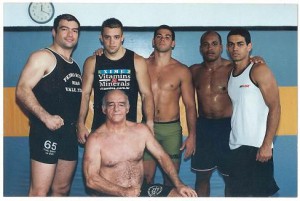
One feature of Mestre Leitão is that he never stops. His brain is still active. He tells me he keeps a notebook on his bedside table on which he writes when he wakes up in the middle of the night, the technique or position he dreamed to be able to study the next day.
A man of his age should spend his mornings reading a book and the afternoons doing crosswords you tell me. No way. The schedule of Roberto would make most us embarrassed. A typical day begins at 5:00 am with a breakfast. At 6 AM he spends the next 3 hours at the gym running, breathing and keeping his back muscles active. From 9 to 10, He goes to the young guys training, to see them train and give some advice. From 10:00 to 12:00 every other day (because every day is really a lot), he goes to the hardcore training…
Do not worry, he relaxes in the afternoon and evening by indulging in his other passion: engineering and abstract painting.
These days are admired indeed. But it is indeed for his experience that the athletes of the world call him to ask for advice:
“I am always available to give advice, I play the role of ‘Grappling consultant’. Jose Aldo regularly asks my opinion, I often get calls from Vitor Belfort and Lyoto Machida before their fights. Saint-Pierre (note: GSP) calls me ‘Mister Encyclopedia’ “
The list of stars who know the number of the direct line of the Mestre is long. He is aware of the struggle to hold information that few people in this world hold. In the context of a meeting as important as a title fight in the UFC, it is better to have Roberto in your corner.
The teaching approach is very scientific. He does not hesitate to use the whiteboard and markers to present a technique to use even complex database of sketches of force vectors to demonstrate the usefulness of some of his movements. From his bag, He leaves us a document translated into several languages: these are the basic principles . Concepts which he said must be known and assimilated by all combatants and he does share with anyone who asks him. He has decades to put on paper and they still continue to evolve.
Below are the ten basic principles of combat (detailed explanations of Roberto Leitão from the site of theNational Committee of the Luta Livre ).
1. If I don’t know, I will not allow.
If you do not know what it is that your opponent is attempting to do, do not let him do
it. A strong opponent with little knowledge in grappling who obeys this principal will be tuff to
defeat. Grappling is a continuous process. You have to block your opponent’s steps. This is the
most important principal.
Unexpected attacks are dangerous ones. Executing a technique always requires a variety of elements to come together. Generally speaking these elements include things such as leverage, base, positioning, timing, momentum, and control points or grips. If you can deny your opponent crucial elements for his technique, you can stop the technique. Even if you do not know what your opponent is trying to do, you can discern the steps he is taking to make it happen and thwart those steps.
2. A systematic repetition is always dangerous.
If you continue to show your opponent the same move you will give him the opportunity
to anticipate it and counter it.
Keep the element of surprise on your side.
3. Every part of our body must work.
It is natural that you concentrate your attention to the parts of your body that are involved in one situation while forgetting others that could give you a big help. Put them to work!
It is easy to concentrate on one element of a technique at the expense of others. For instance in executing an arm bar you might become so focused on having the proper grips with your own arms that you forget about putting your hips at a correct angle and how you should be employing your legs. Use everything. I find this to be particularly important in passing the guard and for escapes. Use your torso and all of your limbs including your head in executing movements. This correlates with the principal of maximum efficiency espoused by Judo. Keep in mind that your torso and upper legs are the strongest parts of your body. Beginners tend to concentrate too much on what they are doing with their upper body at the expense of their core strength.
4. We must keep our forces at the same level of our opponent’s.
If you are with one arm going against two arms of your opponent, something is wrong. If
you are matching the strength of your arm against you opponent’s leg, something is wrong.
This is not about meeting force with force. It is about avoiding situations where you may be overwhelmed by force.
5. An intelligent movement is a continuous movement.
Keep moving. Use your opponent’s momentum and movement to your own advantage.
6. If you control the space you control your opponent’s actions.
Two objects cannot occupy the same space at the same time. Use your body to block you
opponent’s movements.
Blocking your opponent from moving by putting yourself in the space where he wants or needs to go is easier then trying to control him moving him outright.
7. If you support properly, you support strongly.
Use the mat and your opponent’s body for support, not your own strength.
8. If you did not conquer the position, be suspicious of it.
“If there is a beautiful fruit on the side walk, it belongs to somebody or it’s spoiled inside.”
I am unfamiliar with the saying, but the meaning is clear enough. Be wary of what appears to be free. In the context of grappling positions you may be headed into a trap. Players will appear to give something only so they can take something better.
9. Don’t show what you are feeling, only what is convenient for you.
If you opponent doesn’t know how you are feeling about a position, he will not know what
he should do.
Don’t telegraph your intensions. In grappling that usually happens when you start making pressure the way you want to go before the moment arrives. It also can happen because you tense up the muscles you are going to use, or because you change your breathing. On the other hand you can fake your opponent into believing he knows what you are going to do by any of those means and thereby coax him into reacting in a way that suits you.
10. You must always do something.
If you don’t do anything your opponent will be more efficient in his attacks but he does not
need to worry about yours.
Don’t allow your opponent to dictate the fight and don’t be passive.
Kazushi Sakuraba is one of the most well-known MMA fighters, Catch Wrestlers and grapplers in the world.
He rose quickly to fame after defeating some of the Gracie’s and using his trademark technique “The Kimura.”
This is a technique off of his instructional series “Anti Jiu Jitsu” available exclusively at https://bjjfanatics.com

